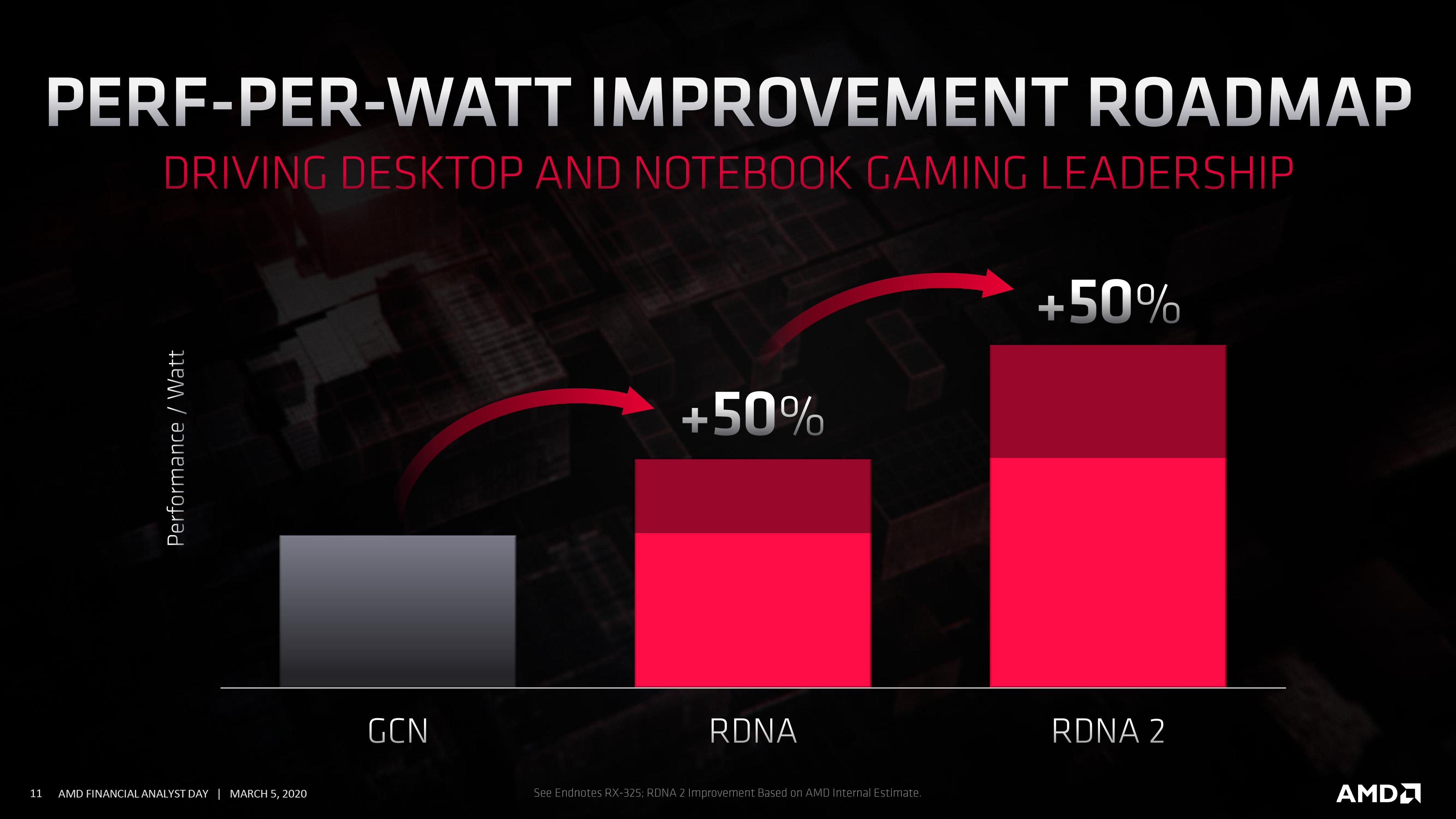Caporegime
AMD have no intention to react to Nvidia, it was clear before Ampere AMD had no intention to get in before or around the same time as Nvidia and they are still in no rush, just saying "we are on our own release schedule"
I don't know what to make of that, since the Ampere kitchen reveal the 80 CU Navi seems to be no more.
The 2080TI is 35% faster than a 5700XT at 1440P, i'm not going to use 4K for this given that every 8GB card falls further behind the 2080TI, they are not 4K cards.
But at 4K compared to the 3080 it is 32% faster than the 2080TI.
2080TI vs 5700XT 135%
3080 vs 2080TI = 132% (@4K)
Not so Big Navi is rumoured to have 60 CU's, that's 50% more than the 5700XT, after scaling make that +45%
5700XT +45% = 145%
145 / 135 = 1.074. so normalized: 60 CU Not so Big Navi vs 2080TI = 107%
3080 vs 60 CU Not so Big Navi: 132 / 107 = 1.23 (+23%)
RDNA1 vs RDNA2 +10% IPC = 60 CU RDNA2 @1900Mhz. 3080 vs 60 CU RDNA2 @ 1900Mhz: 132 / 117 = 1.128 (+13%)
The PS5 clocks to 2.23Ghz, let's assume that's the limit of RDNA2: 2230 / 1900 = 1.173 (+17%)
Now the 6800XT is 34% faster than a 2080TI, 2% faster than the 3080.
Moores Law thinks AMD think they can compete with the 3080 without the 80 CU Big Navi. i think he's right. With the enhancements of the improved 7nm node and improvements to the RDNA architecture AMD could make a still small 350mm2 GPU at around <2.3Ghz, 250 Watts, 16GB GDDR6 and at least trade blows with the 3080 at £150 less and still get good margins.
I think its a shame if AMD don't slam an 80 CU RDNA2 GPU in Nvidia's face anyway but i think AMD were expecting more from Ampere, they are not impressed.
https://www.techspot.com/review/2099-geforce-rtx-3080/
I don't know what to make of that, since the Ampere kitchen reveal the 80 CU Navi seems to be no more.
The 2080TI is 35% faster than a 5700XT at 1440P, i'm not going to use 4K for this given that every 8GB card falls further behind the 2080TI, they are not 4K cards.
But at 4K compared to the 3080 it is 32% faster than the 2080TI.
2080TI vs 5700XT 135%
3080 vs 2080TI = 132% (@4K)
Not so Big Navi is rumoured to have 60 CU's, that's 50% more than the 5700XT, after scaling make that +45%
5700XT +45% = 145%
145 / 135 = 1.074. so normalized: 60 CU Not so Big Navi vs 2080TI = 107%
3080 vs 60 CU Not so Big Navi: 132 / 107 = 1.23 (+23%)
RDNA1 vs RDNA2 +10% IPC = 60 CU RDNA2 @1900Mhz. 3080 vs 60 CU RDNA2 @ 1900Mhz: 132 / 117 = 1.128 (+13%)
The PS5 clocks to 2.23Ghz, let's assume that's the limit of RDNA2: 2230 / 1900 = 1.173 (+17%)
Now the 6800XT is 34% faster than a 2080TI, 2% faster than the 3080.
Moores Law thinks AMD think they can compete with the 3080 without the 80 CU Big Navi. i think he's right. With the enhancements of the improved 7nm node and improvements to the RDNA architecture AMD could make a still small 350mm2 GPU at around <2.3Ghz, 250 Watts, 16GB GDDR6 and at least trade blows with the 3080 at £150 less and still get good margins.
I think its a shame if AMD don't slam an 80 CU RDNA2 GPU in Nvidia's face anyway but i think AMD were expecting more from Ampere, they are not impressed.
https://www.techspot.com/review/2099-geforce-rtx-3080/
Last edited:




